Introduction to Electric Fire Inserts for Fireplaces
Electric fire inserts for fireplaces have revolutionized home heating and decor, combining the aesthetic appeal of traditional wood or gas fireplaces with the convenience and efficiency of modern electric technology. These inserts are designed to fit into existing fireplace openings or can be built into new constructions, providing a versatile solution for homeowners looking to upgrade their living spaces. The evolution of electric fire inserts has been driven by advancements in technology, offering realistic flame effects, customizable settings, and improved safety features.
One of the primary advantages of electric fire inserts is their ease of installation. Unlike traditional fireplaces, which require chimneys, vents, or flues, electric inserts simply need an electrical outlet. This makes them an attractive option for homes without existing fireplaces or for those looking to avoid the extensive renovations associated with installing a new gas or wood-burning fireplace. Additionally, electric fire inserts are generally more energy-efficient, converting nearly all the electricity they use into heat, which can lead to cost savings over time.
Another significant benefit is the safety aspect. Traditional fireplaces pose several risks, including chimney fires, carbon monoxide poisoning, and burns from open flames. Electric fire inserts, on the other hand, eliminate these hazards. They produce no smoke, ash, or soot, reducing indoor air pollution and the associated health risks. Moreover, many electric inserts come with safety features such as automatic shut-off timers and cool-to-the-touch surfaces, making them a safer choice for households with children or pets.

The aesthetic appeal of electric fire inserts cannot be overstated. Modern designs offer incredibly realistic flame effects, often customizable in terms of color, intensity, and pattern. Some models even include built-in media like logs, stones, or glass, enhancing the visual effect and creating a cozy ambiance. These inserts can transform a room, providing a focal point that mimics the warmth and charm of a traditional fireplace without the associated maintenance and mess.
In terms of functionality, electric fire inserts offer unparalleled convenience. Many models come with remote controls, allowing users to adjust the heat and flame settings from anywhere in the room. Some also feature programmable timers and thermostats, enabling precise control over the temperature and operating times. This level of convenience is particularly appealing in today’s fast-paced world, where simplicity and ease of use are highly valued.
Last, the environmental impact of electric fire inserts is worth considering. While they do use electricity, their overall carbon footprint is generally lower than that of wood or gas fireplaces. This is because they do not emit greenhouse gases or particulate matter into the atmosphere. For environmentally conscious consumers, this can be a significant factor in choosing an electric fire insert over more traditional options.
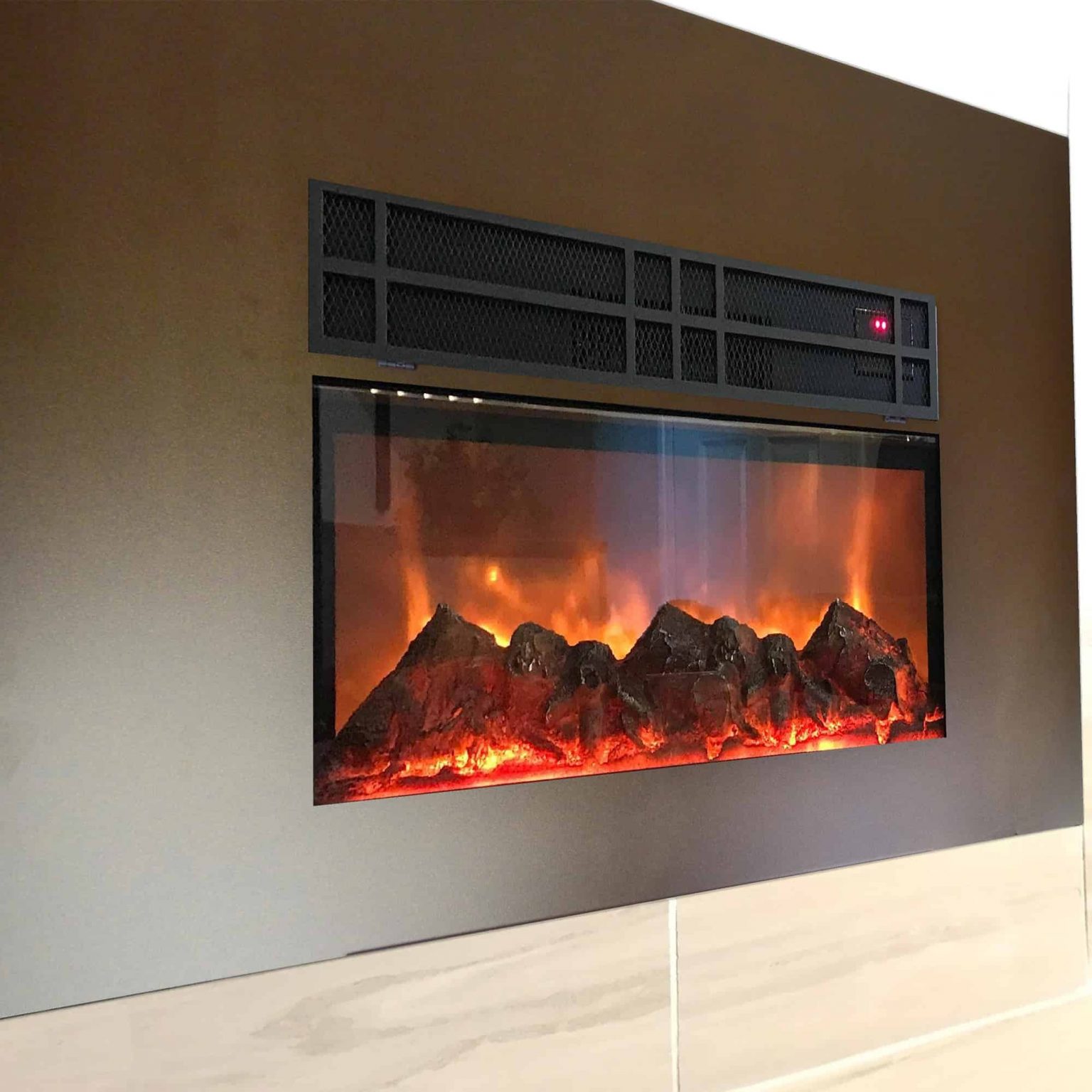
Types of Electric Fire Inserts
Electric fire inserts come in a variety of types, each offering unique features and benefits to cater to different needs and preferences. Understanding the different types can help homeowners make an informed decision when selecting the right insert for their space. The most common types include plug-in electric fire inserts, built-in electric fire inserts, and log set electric inserts.
Plug-In Electric Fire Inserts
Plug-in electric fire inserts are the most versatile and easy to install. These units are designed to fit into existing fireplace openings and simply plug into a standard electrical outlet. This type is ideal for homeowners who want a hassle-free solution that can be set up quickly without the need for professional installation. Plug-in inserts are often portable, allowing for easy relocation if needed.
The convenience of plug-in electric fire inserts extends to their operation. Most models come with remote controls, allowing users to adjust flame settings, heat levels, and even set timers from the comfort of their couch. The realistic flame effects, combined with adjustable LED lighting, create a cozy and inviting atmosphere. These inserts also offer various heating options, typically ranging from 4,600 to 5,000 BTUs, sufficient for supplemental heating in rooms up to 400 square feet.
Safety features are a significant advantage of plug-in electric fire inserts. Many models include automatic shut-off mechanisms to prevent overheating, cool-to-the-touch surfaces to avoid burns, and tip-over protection. These safety measures make them a great choice for homes with children and pets. Additionally, since they produce no smoke, soot, or ash, there’s no need for chimney cleaning or dealing with the mess associated with traditional fireplaces.
The cost-effectiveness of plug-in electric fire inserts is another appealing factor. They tend to be less expensive than built-in models and do not require the same level of commitment or installation expense. Maintenance costs are also minimal since there are no gas lines or chimney inspections to worry about. The energy efficiency of these units means they convert nearly all the electricity they use into heat, providing warmth without significantly impacting electricity bills.
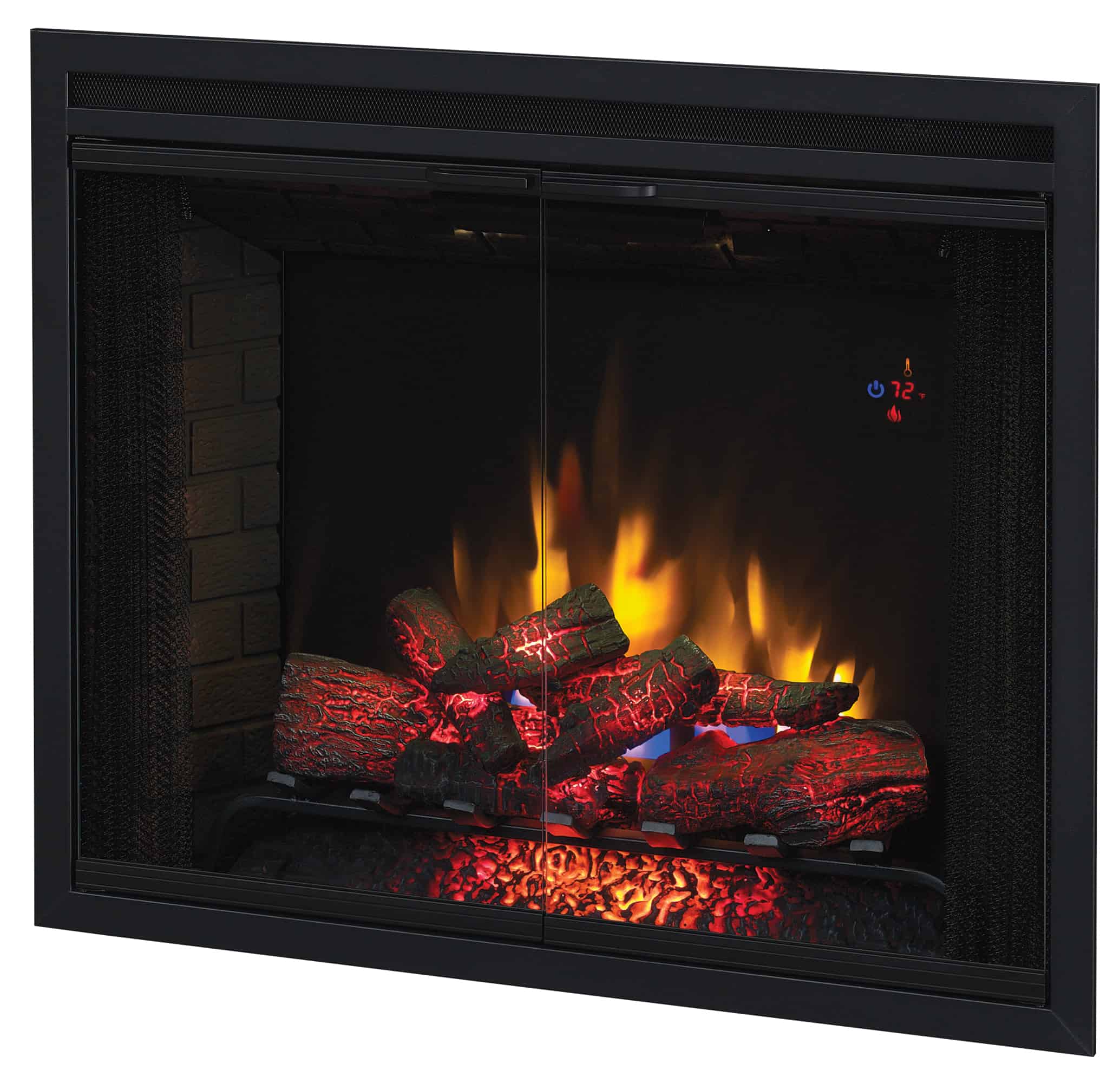
Built-In Electric Fire Inserts
Built-in electric fire inserts offer a more permanent solution for homeowners looking to integrate an electric fireplace into their home’s design. These inserts are installed directly into the wall or a custom-built mantel, providing a seamless and professional appearance. Built-in inserts are an excellent choice for new constructions or major renovations where a more integrated look is desired.
One of the main benefits of built-in electric fire inserts is their sleek, custom-fit design. They can be tailored to match the decor and architectural style of the home, creating a sophisticated focal point in any room. Many built-in models come with advanced features, such as customizable flame colors, brightness settings, and multiple heat settings. Some even offer smart home compatibility, allowing users to control their fireplace through a smartphone app or voice commands.
Installation of built-in electric fire inserts does require some planning and professional help. The insert needs to be hardwired into the electrical system, and proper ventilation must be considered to prevent overheating. However, once installed, these units offer a clean and unobtrusive look that enhances the overall aesthetic of the space. Built-in inserts also provide a high level of functionality, with options for both heating and ambiance-only modes.
Durability and longevity are key advantages of built-in electric fire inserts. Since they are designed to be a permanent fixture in the home, they are typically constructed from high-quality materials that can withstand long-term use. This makes them a worthwhile investment for homeowners looking for a reliable and long-lasting heating solution. Additionally, built-in models often come with extended warranties, providing peace of mind and added value.

Log Set Electric Inserts
Log set electric inserts are designed to replicate the look of a traditional wood-burning fireplace. These inserts feature realistic-looking logs and ember beds, creating an authentic fireplace experience without the hassle of dealing with real wood. Log set inserts are typically placed into existing fireplace openings, making them an ideal choice for homeowners who want to preserve the appearance of their traditional fireplace while upgrading to an electric option.
The realism of log set electric inserts is one of their most appealing features. Advanced LED technology is used to create lifelike flame effects that dance and flicker just like real flames. The logs and embers often glow and pulsate, adding to the overall authenticity. This type of insert is perfect for those who love the look and feel of a traditional fireplace but want the convenience and safety of an electric model.
Installation of log set electric inserts is straightforward and does not require any major modifications to the existing fireplace. The insert is simply placed in the fireplace opening and plugged into a nearby electrical outlet. Some models come with built-in heaters, while others are designed for ambiance only. The heaters in these inserts can typically provide supplemental heat for small to medium-sized rooms, making them a practical as well as an aesthetic addition to the home.
Log set electric inserts also offer a high level of safety. Since there are no real flames, there is no risk of chimney fires, carbon monoxide poisoning, or burns from open flames. These inserts are cool to the touch, making them safe for households with children and pets. Additionally, they produce no smoke or soot, reducing indoor air pollution and eliminating the need for chimney cleaning and maintenance.
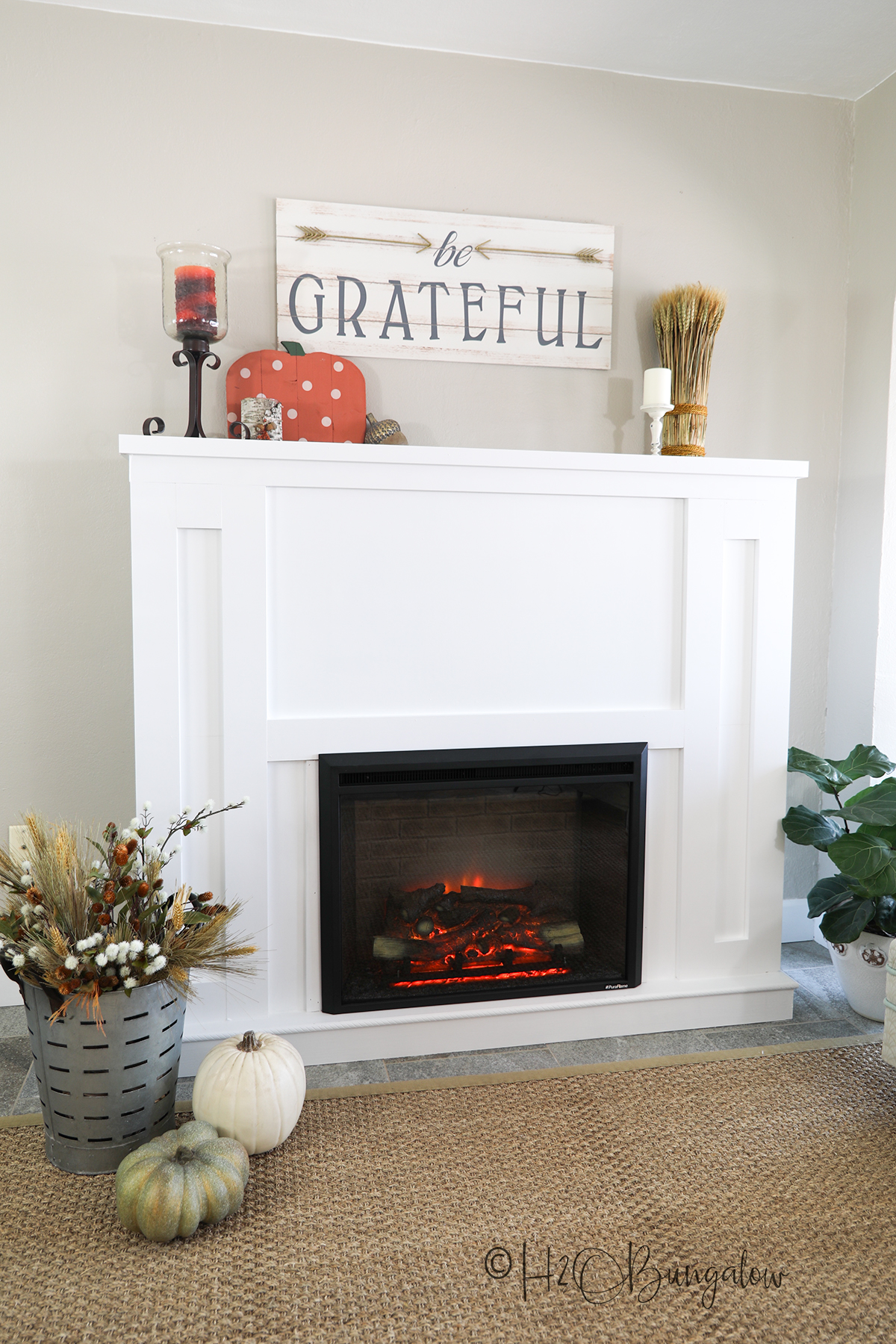
Wall-Mounted Electric Fireplaces
Wall-mounted electric fireplaces are a modern and stylish option for homeowners looking to add an electric fireplace to their home without taking up floor space. These units are designed to be mounted directly onto the wall, providing a sleek and contemporary look. Wall-mounted fireplaces are ideal for apartments, condos, and smaller homes where space is at a premium.
One of the main advantages of wall-mounted electric fireplaces is their space-saving design. They can be installed in virtually any room, including bedrooms, living rooms, and even bathrooms, adding a touch of elegance and warmth without taking up valuable floor space. Many wall-mounted models come with customizable flame effects, multiple heat settings, and remote controls, offering both aesthetic appeal and functionality.
Installation of wall-mounted electric fireplaces is relatively easy and can often be done by the homeowner. The unit is typically mounted on the wall using brackets and then plugged into a standard electrical outlet. Some models can also be recessed into the wall for a more seamless look. The installation process does not require any major renovations, making wall-mounted fireplaces a convenient and cost-effective option.
Wall-mounted electric fireplaces are also highly efficient and environmentally friendly. They convert nearly all the electricity they use into heat, providing warmth without significantly impacting energy bills. Additionally, since they produce no emissions, they are a cleaner and greener alternative to traditional fireplaces. The lack of smoke, soot, and ash also means less maintenance and a healthier indoor environment.

Corner Electric Fireplaces
Corner electric fireplaces are designed to fit into the corner of a room, making them a great option for maximizing space in smaller areas. These fireplaces come in various styles and sizes, allowing homeowners to choose a model that fits their decor and heating needs. Corner electric fireplaces are perfect for adding warmth and ambiance to rooms with limited wall space.
The unique design of corner electric fireplaces allows them to be placed in underutilized spaces, making them an efficient and practical heating solution. They can be used in living rooms, bedrooms, or even dining areas, providing a cozy and inviting atmosphere. Many corner models come with realistic flame effects, adjustable heat settings, and remote controls, offering both aesthetic appeal and convenience.
Installation of corner electric fireplaces is straightforward and does not require any major modifications to the room. The unit is simply placed in the corner and plugged into a nearby electrical outlet. Some models come with built-in mantels, providing additional storage and display space. The compact design of corner fireplaces makes them an ideal choice for apartments, condos, and smaller homes.
Corner electric fireplaces are also energy-efficient and environmentally friendly. They convert nearly all the electricity they use into heat, providing effective supplemental heating without significantly impacting energy bills. Additionally, since they produce no emissions, they are a cleaner and greener alternative to traditional fireplaces. The lack of smoke, soot, and ash also means less maintenance and a healthier indoor environment.

Freestanding Electric Fireplaces
Freestanding electric fireplaces are versatile and easy to install, offering a convenient heating solution that can be placed anywhere in the home. These units do not require any special installation and can be moved from room to room as needed. Freestanding electric fireplaces come in various styles, from traditional stove designs to modern, sleek models, allowing homeowners to choose a look that fits their decor.
One of the main benefits of freestanding electric fireplaces is their portability. These units can be easily moved to different rooms or even taken with you if you move to a new home. This makes them a flexible and cost-effective heating solution. Freestanding fireplaces typically come with realistic flame effects, adjustable heat settings, and remote controls, offering both aesthetic appeal and functionality.
Installation of freestanding electric fireplaces is hassle-free and does not require any modifications to the home. The unit is simply placed in the desired location and plugged into a standard electrical outlet. This makes freestanding fireplaces an ideal choice for renters or anyone who does not want to commit to a permanent installation. Many freestanding models also come with built-in heaters, providing effective supplemental heating for small to medium-sized rooms.
Freestanding electric fireplaces are also highly efficient and environmentally friendly. They convert nearly all the electricity they use into heat, providing warmth without significantly impacting energy bills. Additionally, since they produce no emissions, they are a cleaner and greener alternative to traditional fireplaces. The lack of smoke, soot, and ash also means less maintenance and a healthier indoor environment.
Interesting Articles You May Want to Check:
- How Does a Fireplace Insert Work
- Small Fireplace Inserts for Gas
- Electric Fireplace Insert for Wood Burning Fireplace
- Electric Fireplace Insert Stone
- Gas Fireplace Inserts Cape Cod

Installation and Setup of Electric Fire Inserts
Installing and setting up an electric fire insert is a relatively straightforward process compared to traditional fireplaces. However, understanding the steps involved and the specific requirements for each type of insert is crucial to ensure a safe and efficient installation. This section covers the general installation process, specific considerations for different types of inserts, and tips for ensuring a successful setup.
General Installation Process
The installation process for electric fire inserts typically involves a few key steps: choosing the right location, preparing the fireplace opening, installing the insert, and connecting it to the power source. Choosing the right location is crucial, as it will determine the effectiveness of the heating and the overall aesthetics of the room. Ensure that the chosen location has access to a power outlet and provides adequate space for ventilation.
Preparing the fireplace opening involves cleaning out any debris or old materials and measuring the space to ensure a proper fit for the insert. It’s important to check the manufacturer’s specifications for the dimensions and any additional requirements. Once the space is prepared, the insert can be installed according to the manufacturer’s instructions. This may involve attaching brackets, securing the unit in place, and ensuring it is level.
Connecting the insert to the power source is usually the final step. For plug-in models, this simply involves plugging the unit into a nearby outlet. For built-in models, hardwiring into the electrical system may be required, which should be done by a licensed electrician to ensure safety and compliance with local codes. Once connected, test the insert to ensure it is functioning properly, including checking the flame effects, heat output, and any additional features.
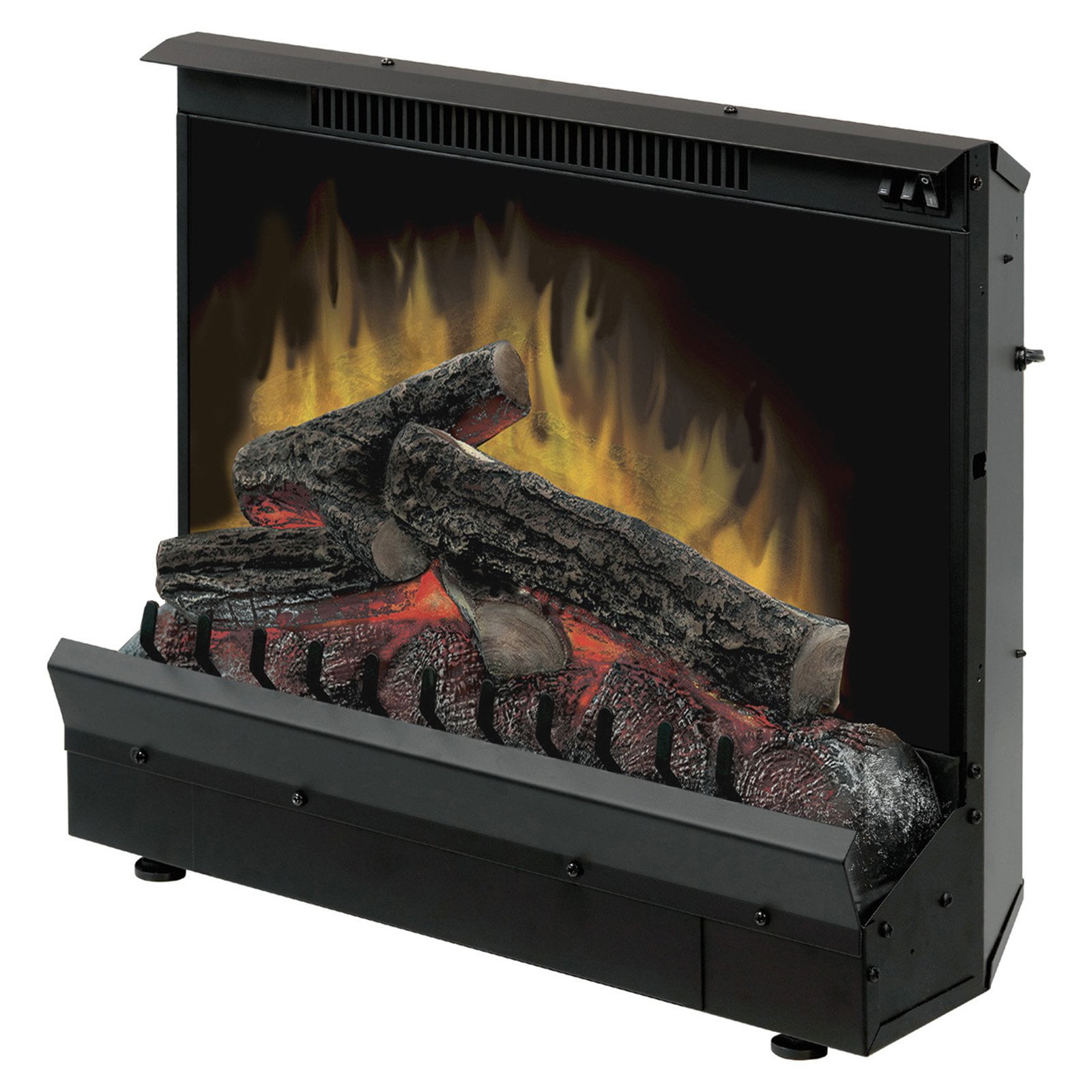
Plug-In Electric Fire Inserts
The installation of plug-in electric fire inserts is generally the most straightforward. These units are designed for simple setup and can often be installed without professional help. Begin by choosing the right location and preparing the fireplace opening as described in the general process. Ensure that there is a nearby power outlet to plug the unit into.
Once the space is ready, place the insert into the fireplace opening and secure it according to the manufacturer’s instructions. This may involve attaching brackets or using other securing mechanisms to ensure the unit is stable and safe. Plug the unit into the power outlet and turn it on to test the flame effects and heat settings. Make any necessary adjustments to ensure optimal performance.
Safety is a key consideration with plug-in electric fire inserts. Ensure that the unit is placed on a stable surface and that the power cord is not a tripping hazard. Avoid using extension cords, as they can pose a fire risk. If the unit has a remote control, ensure that it is working properly and that the batteries are fresh.
Built-In Electric Fire Inserts
Installing built-in electric fire inserts is more complex and typically requires professional help. Begin by choosing the right location and ensuring that the space meets the manufacturer’s specifications for dimensions and ventilation. Prepare the fireplace opening by cleaning out any debris and making any necessary modifications to fit the insert.
The next step involves hardwiring the insert into the electrical system. This should be done by a licensed electrician to ensure safety and compliance with local codes. The electrician will connect the unit to the power source and ensure that all wiring is secure and properly insulated. Once the electrical work is complete, the insert can be placed into the fireplace opening and secured according to the manufacturer’s instructions.
After the insert is installed and connected to the power source, test it to ensure it is functioning properly. Check the flame effects, heat output, and any additional features. Make any necessary adjustments to ensure optimal performance. Ensure that the unit is level and securely in place to prevent any safety hazards.

Log Set Electric Inserts
The installation of log set electric inserts is relatively simple and can often be done without professional help. Begin by choosing the right location and preparing the fireplace opening. Clean out any debris and measure the space to ensure a proper fit for the insert. Ensure that there is a nearby power outlet to plug the unit into.
Once the space is ready, place the log set insert into the fireplace opening and arrange the logs and ember bed according to the manufacturer’s instructions. Plug the unit into the power outlet and turn it on to test the flame effects and heat settings. Make any necessary adjustments to ensure optimal performance.
Safety is a key consideration with log set electric inserts. Ensure that the unit is placed on a stable surface and that the power cord is not a tripping hazard. Avoid using extension cords, as they can pose a fire risk. If the unit has a remote control, ensure that it is working properly and that the batteries are fresh.
Wall-Mounted Electric Fireplaces
Installing wall-mounted electric fireplaces requires careful planning and precise execution. Begin by choosing the right location and ensuring that the wall can support the weight of the unit. Mark the location of the mounting brackets according to the manufacturer’s instructions and ensure that the brackets are level.
Drill holes for the mounting brackets and secure them to the wall using the appropriate screws and anchors. Once the brackets are in place, lift the fireplace unit and hang it on the brackets. Ensure that the unit is securely attached and leveled. Plug the unit into a nearby power outlet and turn it on to test the flame effects and heat settings. Make any necessary adjustments to ensure optimal performance.
Safety is a key consideration with wall-mounted electric fireplaces. Ensure that the unit is securely attached to the wall and that there are no loose parts. Avoid placing the unit near flammable materials or in high-traffic areas where it could be bumped or knocked over. If the unit has a remote control, ensure that it is working properly and that the batteries are fresh.
Corner Electric Fireplaces
The installation of corner electric fireplaces is similar to that of other types of inserts but requires careful placement to maximize space and aesthetics. Begin by choosing the right location and preparing the corner where the unit will be placed. Ensure that the corner is free of debris and that there is a nearby power outlet to plug the unit into.
Once the space is ready, place the corner electric fireplace into the desired location and secure it according to the manufacturer’s instructions. This may involve attaching brackets or using other securing mechanisms to ensure the unit is stable and safe. Plug the unit into the power outlet and turn it on to test the flame effects and heat settings. Make any necessary adjustments to ensure optimal performance.
Safety is a key consideration with corner electric fireplaces. Ensure that the unit is placed on a stable surface and that the power cord is not a tripping hazard. Avoid using extension cords, as they can pose a fire risk. If the unit has a remote control, ensure that it is working properly and that the batteries are fresh.
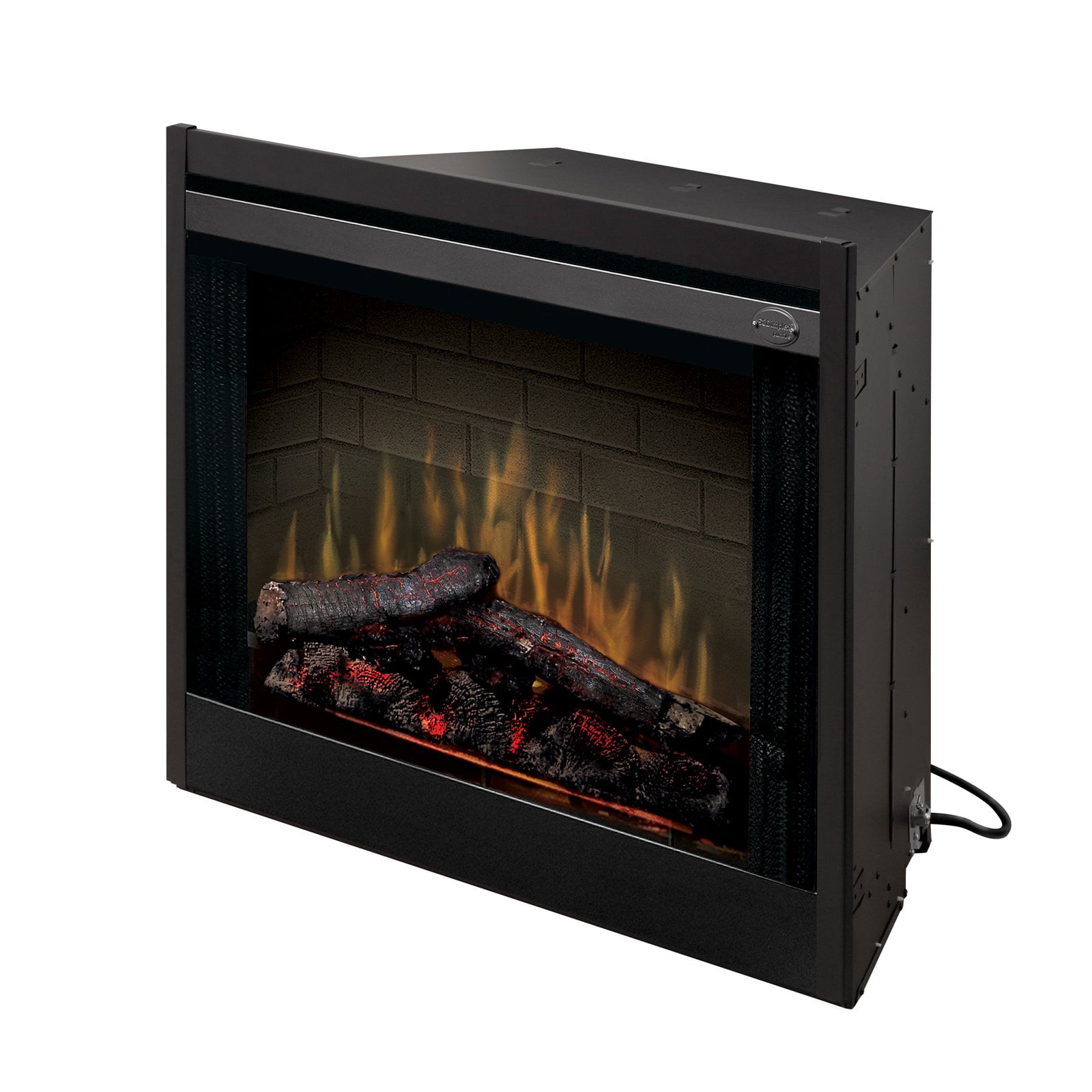
Maintenance and Care
Maintaining and caring for electric fire inserts is relatively simple compared to traditional fireplaces, but regular upkeep is still necessary to ensure optimal performance and longevity. This section covers general maintenance tips, specific care instructions for different types of inserts, and troubleshooting common issues.
General Maintenance Tips
Regular maintenance of electric fire inserts involves a few key tasks: cleaning the unit, checking the electrical connections, and inspecting the flame effects and heating elements. Cleaning the unit involves wiping down the exterior with a soft, damp cloth to remove dust and debris. Avoid using harsh chemicals or abrasive materials that could damage the finish.
Checking the electrical connections involves ensuring that the power cord is not frayed or damaged and that the plug is securely connected to the outlet. If the unit is hardwired, inspect the wiring to ensure it is properly insulated and secured. If any issues are found, contact a licensed electrician for repairs.
Inspecting the flame effects and heating elements involves checking for any signs of wear or damage. This may include replacing burnt-out bulbs or LEDs, cleaning the glass or screen, and ensuring that the heating elements are functioning properly. Refer to the manufacturer’s instructions for specific maintenance requirements and replacement parts.
Plug-In Electric Fire Inserts
Maintaining plug-in electric fire inserts is straightforward and involves regular cleaning and inspection. Clean the exterior of the unit with a soft, damp cloth to remove dust and debris. Avoid using harsh chemicals or abrasive materials that could damage the finish. If the unit has a glass front, clean it with a glass cleaner to remove smudges and fingerprints.
Inspect the power cord and plug regularly to ensure they are not frayed or damaged. If any issues are found, replace the power cord or contact a licensed electrician for repairs. Check the flame effects and heating elements for any signs of wear or damage. Replace burnt-out bulbs or LEDs as needed and ensure that the heating elements are functioning properly.
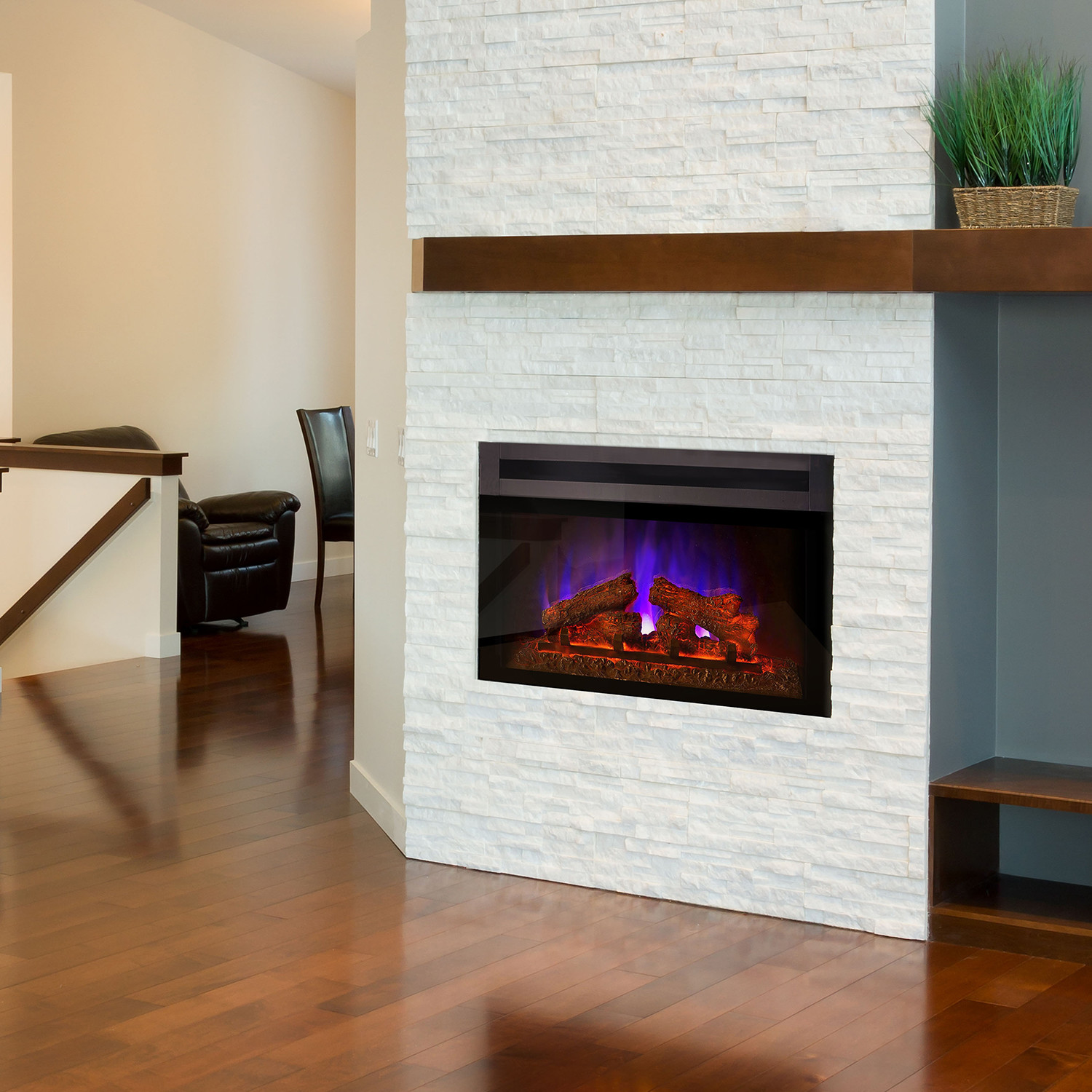
Built-In Electric Fire Inserts
Maintaining built-in electric fire inserts involves regular cleaning and inspection, as well as periodic checks of the hardwired electrical connections. Clean the exterior of the unit with a soft, damp cloth to remove dust and debris. Avoid using harsh chemicals or abrasive materials that could damage the finish. Clean the glass or screen with a glass cleaner to remove smudges and fingerprints.
Inspect the hardwired electrical connections to ensure they are properly insulated and secured. If any issues are found, contact a licensed electrician for repairs. Check the flame effects and heating elements for any signs of wear or damage. Replace burnt-out bulbs or LEDs as needed and ensure that the heating elements are functioning properly.
Log Set Electric Inserts
Maintaining log set electric inserts involves regular cleaning and inspection, as well as periodic checks of the electrical connections. Clean the logs and ember bed with a soft, damp cloth to remove dust and debris. Avoid using harsh chemicals or abrasive materials that could damage the finish. If the unit has a glass front, clean it with a glass cleaner to remove smudges and fingerprints.
Inspect the power cord and plug regularly to ensure they are not frayed or damaged. If any issues are found, replace the power cord or contact a licensed electrician for repairs. Check the flame effects and heating elements for any signs of wear or damage. Replace burnt-out bulbs or LEDs as needed and ensure that the heating elements are functioning properly.

Wall-Mounted Electric Fireplaces
Maintaining wall-mounted electric fireplaces involves regular cleaning and inspection, as well as periodic checks of the mounting brackets and electrical connections. Clean the exterior of the unit with a soft, damp cloth to remove dust and debris. Avoid using harsh chemicals or abrasive materials that could damage the finish. Clean the glass or screen with a glass cleaner to remove smudges and fingerprints.
Inspect the mounting brackets to ensure they are securely attached and that there are no loose parts. Check the power cord and plug regularly to ensure they are not frayed or damaged. If any issues are found, replace the power cord or contact a licensed electrician for repairs. Check the flame effects and heating elements for any signs of wear or damage. Replace burnt-out bulbs or LEDs as needed and ensure that the heating elements are functioning properly.
Corner Electric Fireplaces
Maintaining corner electric fireplaces involves regular cleaning and inspection, as well as periodic checks of the electrical connections. Clean the exterior of the unit with a soft, damp cloth to remove dust and debris. Avoid using harsh chemicals or abrasive materials that could damage the finish. Clean the glass or screen with a glass cleaner to remove smudges and fingerprints.
Inspect the power cord and plug regularly to ensure they are not frayed or damaged. If any issues are found, replace the power cord or contact a licensed electrician for repairs. Check the flame effects and heating elements for any signs of wear or damage. Replace burnt-out bulbs or LEDs as needed and ensure that the heating elements are functioning properly.

Benefits of Electric Fire Inserts
Electric fire inserts offer numerous benefits that make them an attractive option for homeowners. These benefits include convenience, safety, energy efficiency, cost savings, and aesthetic appeal. Understanding these advantages can help homeowners make an informed decision when choosing an electric fire insert.
Convenience
One of the main benefits of electric fire inserts is their convenience. Unlike traditional fireplaces, which require regular maintenance, cleaning, and the purchase of wood or gas, electric inserts are virtually maintenance-free. Plug them in, turn them on, and enjoy the warmth and ambiance. Many models come with remote controls, programmable timers, and adjustable settings, allowing users to customize their experience with ease.
The ease of installation is another convenience factor. Electric fire inserts do not require chimneys, vents, or flues, making them a hassle-free option for homes without existing fireplaces. They can be installed in a matter of hours and do not require the extensive renovations associated with traditional fireplaces. This makes them an ideal choice for renters or anyone looking for a quick and easy upgrade.
Safety
Safety is a significant advantage of electric fire inserts. Traditional fireplaces pose several risks, including chimney fires, carbon monoxide poisoning, and burns from open flames. Electric inserts eliminate these hazards, as they produce no smoke, ash, or soot. Many models come with safety features such as automatic shut-off timers, cool-to-the-touch surfaces, and tip-over protection, making them a safer choice for households with children or pets.
Additionally, electric fire inserts do not require the handling or storage of flammable materials like wood or gas. This reduces the risk of accidental fires and makes them a safer option for indoor use. The lack of real flames also means there is no risk of sparks or embers escaping and causing a fire.
Energy Efficiency
Electric fire inserts are highly energy-efficient, converting nearly all the electricity they use into heat. This efficiency means that they can provide effective supplemental heating without significantly impacting energy bills. Many models also come with programmable thermostats and timers, allowing users to control the temperature and operating times, further enhancing their energy efficiency.
The lack of need for chimneys or vents also contributes to their efficiency. Traditional fireplaces can lose a significant amount of heat through the chimney, while electric inserts deliver all their heat directly into the room. This makes them a more efficient and cost-effective heating solution.
Cost Savings
The cost savings associated with electric fire inserts are another appealing factor. While the initial purchase price may be comparable to or slightly higher than that of traditional fireplaces, the long-term savings can be significant. Electric inserts do not require the purchase of wood or gas, nor do they incur the costs associated with chimney cleaning, inspections, or repairs.
Additionally, their energy efficiency can lead to lower heating bills, especially when used as supplemental heating in conjunction with a central heating system. The minimal maintenance costs also contribute to overall savings, making electric fire inserts a cost-effective choice for homeowners.
Aesthetic Appeal
The aesthetic appeal of electric fire inserts cannot be overstated. Modern designs offer incredibly realistic flame effects, often customizable in terms of color, intensity, and pattern. Some models even include built-in media like logs, stones, or glass, enhancing the visual effect and creating a cozy ambiance. These inserts can transform a room, providing a focal point that mimics the warmth and charm of a traditional fireplace without the associated maintenance and mess.
The variety of styles and designs available also means that there is an electric fire insert to suit any decor. From traditional log sets to sleek, modern wall-mounted units, homeowners can choose a model that complements their home’s aesthetic and enhances its overall appeal.
Environmental Impact
The environmental impact of electric fire inserts is generally lower than that of traditional fireplaces. While they do use electricity, their overall carbon footprint is reduced due to their high efficiency and lack of emissions. Traditional wood-burning fireplaces produce smoke, ash, and particulate matter, contributing to indoor and outdoor air pollution. Gas fireplaces, while cleaner, still produce greenhouse gases.
Electric fire inserts produce no emissions, making them a cleaner and greener alternative. For environmentally conscious consumers, this can be a significant factor in choosing an electric fire insert over more traditional options. Additionally, the lack of need for wood or gas reduces the demand for these resources, further minimizing their environmental impact.

Related Posts:
- Electric Insert For Wood Burning Fireplace
- Dual Fuel Fireplace Insert
- Fireplace Insert Adapter
- Fireplace Insert Cover
- Gas Fireplace Insert Design Ideas
- Rustic Fireplace Insert Ideas
- Vent Free Gas Fireplace Insert with Logs
- Gas Fireplace Insert BTU
- Christmas Fireplace Insert Decorations
- Electric Fireplace Insert Installation Instructions